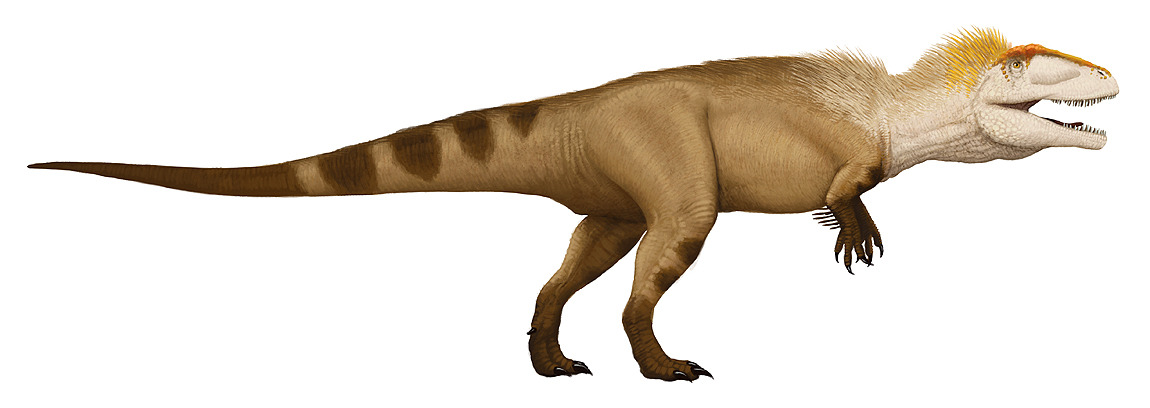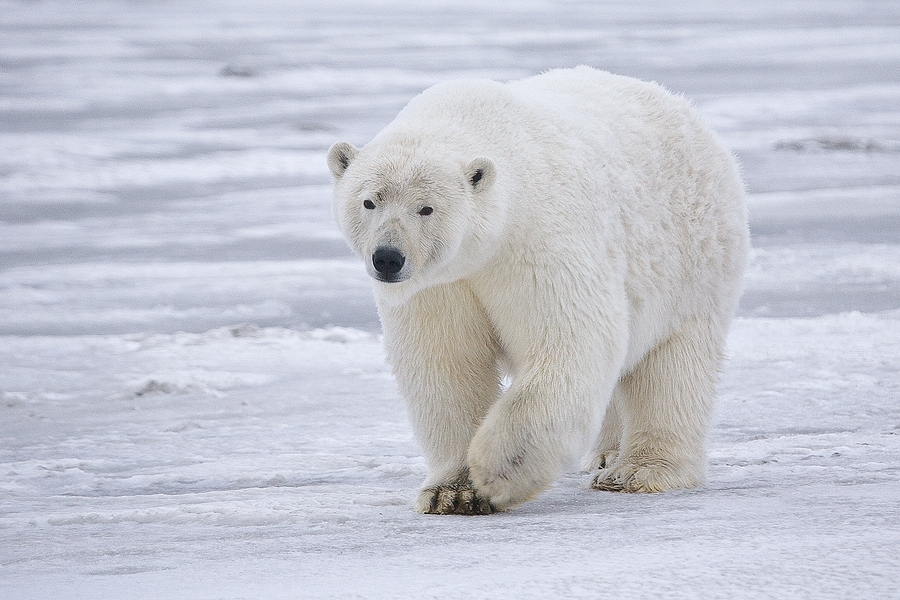Post by Infinity Blade on Dec 16, 2014 8:26:58 GMT 5
Shaochilong maortuensis
Shaochilong (meaning "shark toothed dragon") is a genus of carcharodontosaurid dinosaur from the mid Cretaceous (Turonian stage) Ulansuhai Formation of China (about 92 million years ago). The type species, S. maortuensis, was originally named Chilantaisaurus maortuensis, but was re-described and reclassified in 2009. The holotype, IVPP V2885.1-7, consisting of skull fragments, axis and six caudal vertebrae associated to a single individual is the only known specimen. This specimen was discovered in Outer Mongolia and described by Hu in 1964 as a species of Chilantaisaurus. Chure (2002) and Rauhut (2001) suggested that it did not belong to that genus, and was probably a primitive coelurosaur. However, a re-description by Brusatte and colleagues in 2009 found that it was in fact a carcharodontosaurid, the first recognized from Asia. The genus was originally informally named "Alashansaurus". IVPP V2885.1 was probably adult or nearly adult individual. Its length – based on the length of the maxillary tooth row – is estimated of 5 to 6 metres (16 to 20 ft). Estimated length of the femur is 61.5 cm, what suggests that whole animal weighted approximately 500 kilograms (1,100 lb).

© @ Asparavis
Polar Bear-Ursus maritimus
The polar bear (Ursus maritimus) is a carnivorous bear whose native range lies largely within the Arctic Circle, encompassing the Arctic Ocean, its surrounding seas and surrounding land masses. It is a large bear, approximately the same size as the omnivorous Kodiak bear (Ursus arctos middendorffi). A boar (adult male) weighs around 350–700 kg (770–1,540 lb), while a sow (adult female) is about half that size. Although it is the sister species of the brown bear, it has evolved to occupy a narrower ecological niche, with many body characteristics adapted for cold temperatures, for moving across snow, ice, and open water, and for hunting the seals which make up most of its diet. Although most polar bears are born on land, they spend most of their time at sea. Their scientific name means "maritime bear", and derives from this fact. Polar bears hunt their preferred food of seals from the edge of sea ice, often living off fat reserves when no sea ice is present. The polar bear is classified as a vulnerable species, with eight of the nineteen polar bear subpopulations in decline. For decades, large scale hunting raised international concern for the future of the species but populations rebounded after controls and quotas began to take effect. For thousands of years, the polar bear has been a key figure in the material, spiritual, and cultural life of Arctic indigenous peoples, and polar bears remain important in their cultures.

Shaochilong (meaning "shark toothed dragon") is a genus of carcharodontosaurid dinosaur from the mid Cretaceous (Turonian stage) Ulansuhai Formation of China (about 92 million years ago). The type species, S. maortuensis, was originally named Chilantaisaurus maortuensis, but was re-described and reclassified in 2009. The holotype, IVPP V2885.1-7, consisting of skull fragments, axis and six caudal vertebrae associated to a single individual is the only known specimen. This specimen was discovered in Outer Mongolia and described by Hu in 1964 as a species of Chilantaisaurus. Chure (2002) and Rauhut (2001) suggested that it did not belong to that genus, and was probably a primitive coelurosaur. However, a re-description by Brusatte and colleagues in 2009 found that it was in fact a carcharodontosaurid, the first recognized from Asia. The genus was originally informally named "Alashansaurus". IVPP V2885.1 was probably adult or nearly adult individual. Its length – based on the length of the maxillary tooth row – is estimated of 5 to 6 metres (16 to 20 ft). Estimated length of the femur is 61.5 cm, what suggests that whole animal weighted approximately 500 kilograms (1,100 lb).

© @ Asparavis
Polar Bear-Ursus maritimus
The polar bear (Ursus maritimus) is a carnivorous bear whose native range lies largely within the Arctic Circle, encompassing the Arctic Ocean, its surrounding seas and surrounding land masses. It is a large bear, approximately the same size as the omnivorous Kodiak bear (Ursus arctos middendorffi). A boar (adult male) weighs around 350–700 kg (770–1,540 lb), while a sow (adult female) is about half that size. Although it is the sister species of the brown bear, it has evolved to occupy a narrower ecological niche, with many body characteristics adapted for cold temperatures, for moving across snow, ice, and open water, and for hunting the seals which make up most of its diet. Although most polar bears are born on land, they spend most of their time at sea. Their scientific name means "maritime bear", and derives from this fact. Polar bears hunt their preferred food of seals from the edge of sea ice, often living off fat reserves when no sea ice is present. The polar bear is classified as a vulnerable species, with eight of the nineteen polar bear subpopulations in decline. For decades, large scale hunting raised international concern for the future of the species but populations rebounded after controls and quotas began to take effect. For thousands of years, the polar bear has been a key figure in the material, spiritual, and cultural life of Arctic indigenous peoples, and polar bears remain important in their cultures.









